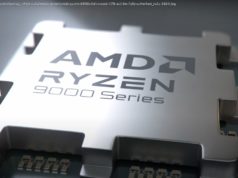With 3.6GHz and mmWave spectrum earmarked for mobile telcos to deploy 5G networks over the next three years, SES Satellites has argued that they should not be simply shifted off the bands.
While the telco industry, government, and regulators argue over the allocation of spectrum in the millimetre-wave (mmWave) and 3.6GHz bands for 5G, satellite providers have spoken up to say they should be permitted to retain at least a portion of the bands they are already heavily deployed across.
Speaking during the Australian Communications and Media Authority (ACMA) RadComms 2017 conference in Sydney, Glen Tindall, head of Government Sales Asia-Pacific at SES Satellites, said his company can work alongside mobile operators to be « part of the solution ».
Pointing out that satellite providers including Inmarsat, IPStar, SES, and Australia’s National Broadband Network (NBN) have collectively invested billions of dollars to deploy services in mmWave spectrum, Tindall argued that they should be able to use these investments to help telcos extend their 5G networks to prevent a digital divide.
« We think satellites are part of the solution for everybody. We want our 5G too, » he argued.
« We want to have [5G] everywhere; we want to make sure that your networks can reach as many people as we possibly can. And we’re just asking for a small amount of spectrum to make sure that we can continue to provide these services where the terrestrial networks really struggle to do so. »
SES, which is currently planning the launch of a multi-terabit network involving seven medium earth orbit satellites with 30,000 steerable beams to provide 400 million square kilometres of coverage, had previously argued to the ACMA that satellite providers should not be shifted off mmWave spectrum in favour of mobile providers, because satellite can help enable 5G .
According to SES senior legal and regulatory counsel Daniel Mah, satellite can « play a role in helping mobile networks achieve latency of sub-1 millisecond » via on small cells for densification.
With many of the current high-throughput satellites « very heavily deployed » in the 28GHz mmWave band — including the two NBN satellites — and plans announced by satellite companies to deploy in the 37-52GHz band, Mah said the ACMA should instead consider 26GHz, 32GHz, 66GHz, and 81GHz, as there is limited existing and planned usage by satellites across them.
Also speaking during RadComms 2017, Communications Alliance CEO John Stanton said that as WRC19 lists 31GHz but not 28GHz as a candidate for 5G, there is no reason for Australia to be examining the latter band.
The Comms Alliance CEO also said spectrum sharing practices would allow for a more permissive rather than restrictive regime, and recommended that the government agency not ignore sharing studies.
The ACMA had last week said that if it decides to accelerate its consideration process of mmWave spectrum between 24.25GHz and 27.5GHz, it could identify bands in early 2018, with a planning decision expected in mid-2018.
All three of the ACMA’s suggested timelines for 5G spectrum allocation involve auctioning off mmWave spectrum in Q1 2019, although it noted that it may be allocated under the new Radiocommunications Bill .
The ACMA is also moving to auction off 3.6GHz 5G spectrum in Q2 2018 — another band in which satellite is deployed, with Stanton similarly speaking on the issues of shifting existing users off the band in favour of mobile telcos.
More discussions are needed prior to the 2018 auction of 3.6GHz, Stanton said, particularly due to the lack of a compromise reached with satellite providers, which could dissuade them from investing in satellite coverage over the region in future.
« Inmarsat, a company that’s made a major investment in Australia… is probably today feeling like it’s undergone a bait-and-switch experience, » Stanton said.
« In the original consultation recommendation from the ACMA was a seven-year period in which to relocate the infrastructure that Inmarsat would need to relocate, and Inmarsat said, ’15 would be better’, and the ACMA said, ‘OK, let’s compromise on five’.
« I think there is scope for further conversation around the implementation of those recommendations. There’s been no discussion that I know of around that potential conversation, but it is a major cost to an international operator to have to relocate that infrastructure, and it is noted globally — there is the potential for it to impact decisions around future investment, so I think that whole situation needs to be handled carefully. »
After first releasing a discussion paper on the possibility of refarming the 3.6GHz spectrum band for 5G a year ago, the ACMA last week proposed in its Five-Year Spectrum Outlook (FYSO) a reallocation period for licences across the 2575-3700MHz spectrum band of two years for Sydney, Melbourne, Adelaide, Brisbane, and Canberra metro areas; five years in the Perth metro area; and seven years in regional areas.
A reallocation deadline of 12 months prior to the end of that first two-year period would then see existing 3.6GHz licence holders have their licences cancelled.
The ACMA suggested a new licence term of 12 years, with the spectrum to be allocated via an enhanced simultaneous multi-round ascending auction in 25 lots of 5MHz.
It also suggested in its FYSO « a range of mitigation measures » for incumbent users in the 3.6GHz band, including « a commitment to developing arrangements for site-based wireless broadband services in the 5.6GHz » band, support for ongoing access to spectrum, and identifying earth station protection zones on Australia’s east coast.
This followed arguments from incumbent satellite companies and wireless ISPs that again, the 3.6GHz spectrum should not be taken away from them and given to mobile telcos.
Speaking from the perspective of a mobile telco, Telstra GM of 5G and IoT Todd Essery on Thursday reiterated the importance of being allocated 3.6GHz and mmWave spectrum as soon as possible to avoid Australia losing its leadership position in mobile networks.
« We really need to get access to that spectrum so we can deploy 5G as fast as possible, » Essery told RadComms 2017.
« 26GHz will basically do the heavy lifting for us, this will really bring about the multi-gigabit wireless broadband for Australians. So 3.6GHz will be there to really deliver that good underlay, 26GHz will really sort of bear the load of the amount of data that our networks are having to support these days. »
Essery said the telco’s next phase in 5G will be deploying its network on the Gold Coast.






